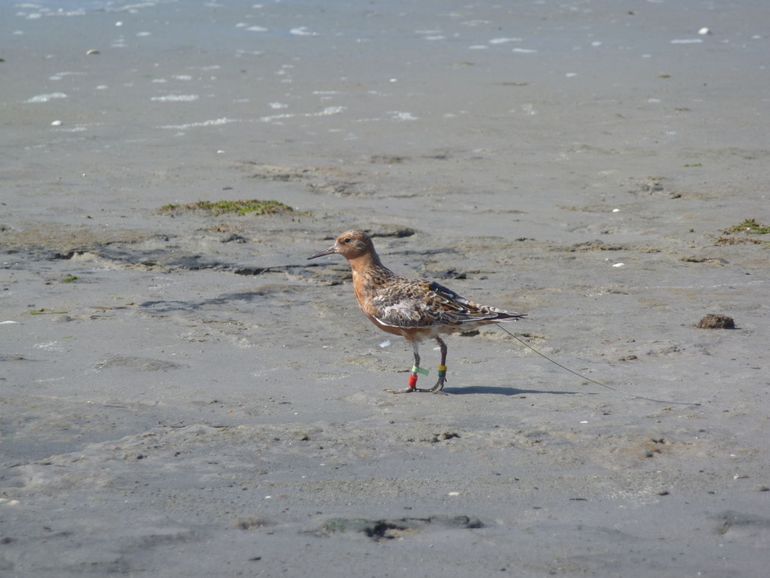
Surprising: food density is a bad predictor of bird numbers
NIOZ Royal Netherlands Institute for Sea ResearchMore is less
Contrary to what was previously thought, the small shellfish-eating wader red knot did not go where most prey (edible cockles) were found together. "When you think about it, it is not so surprising," explains researcher Allert Bijleveld, "it's not just about the quantity of food, but also the quality." Although prey can be easily found at these high densities, because of competition amongst cockles themselves they are skinny and thus of lower quality. And red knots avoid low quality prey. As competition is widespread in nature, ‘more is less’ will not only apply to knots eating cockles, but to many more animals that depend on the quality of their food. These results have important implications for predicting ‘carrying capacity’: the number of animals that can be sustained by available food stocks in an area such as the Dutch Wadden Sea. Knowledge of carrying capacity is important for careful management of this World Heritage Site.
Gourmet or glutton
The trade-off between the quantity and quality of their food differs between individuals. Red knots swallow their prey whole and crush the shells in their muscular stomach, their ‘gizzard’. The thicker the shell of a cockle, the larger the gizzard must be. "With ultrasound we can measure the gizzard size of live, wild caught, red knots. Individual knots differ in gizzard size", says Bijleveld. Knots with a smaller gizzard are gourmets that weigh the quality of their food over its quantity. They avoid areas where cockles are more abundant, where they are of lower quality. Red knots with bigger gizzards are gluttons that weigh the quantity of their food over its quality. Gluttons are found where cockles are relatively abundant and more easily found. Of course, in nature there is a continuum between gourmets and gluttons. Bijleveld: "The combination of quantity and quality is essential. For the protection of natural areas we should therefore not only be preoccupied by the amount of food. Quality is equally important."

Just like Nils Holgersson, on the back of a knot
Due to rapid technical developments, biologists can now ‘fly with the birds’. In cooperation with engineers from the American Cornell University, Bijleveld and colleagues have developed a new technique that allows close tracking of small species such as red knots. "Our technique is similar to the GPS in your phone, but it works just the other way around: the receiver stations don’t move in outer space, but stand on the mudflats, which allows working with small and light-weight transmitters", Bijleveld explains. "For the first time, just like Nils Holgersson, we can fly on the backs of red knots and find out that they act in ways we had never imagined!".
Text: NIOZ
Photos: Jan van de Kam (lead photo: group of red knots in Wadden Sea); Allert Bijleveld, NIOZ
